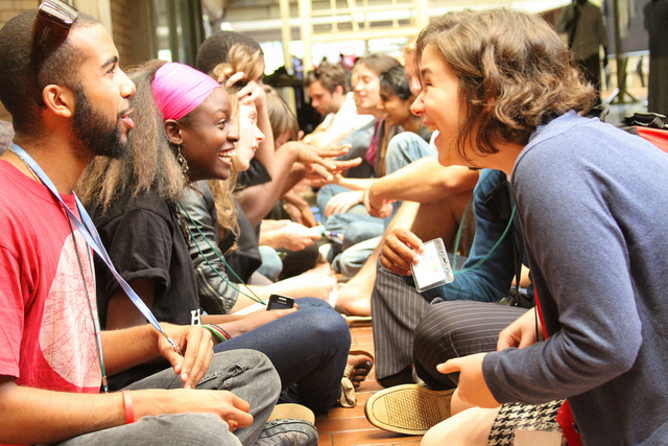
Women Act Like Men When They Switch Seats at Speed Dating (Op-Ed)

This article was originally published at The Conversation. The publication contributed the article to LiveScience's Expert Voices: Op-Ed & Insights.
On a TV show or in a movie, if a guy and a girl are at a party and one approaches the other to strike up a conversation, chances are that it was the guy who approached the girl.
That is because we have what psychologists call “behavioural scripts”, or a sequence of events that we typically expect to occur in social situations. In most cultures, expectations about male and female dating behaviour (such as “guys approach girls”) are so entrenched that there are special days or dances where the script is flipped. On Sadie Hawkins Day (traditionally observed in early November) or at a Sadie Hawkins Dance, women have the opportunity to invert social convention by asking men out on a date or to a dance.
To study such scripts that underpin dating behaviour, researchers have used speed dating.
Speed dating is a structured way for daters to meet a lot of people quickly. The typical speed-dating event features women sitting at various locations around a room, often a coffee shop or bar, while men circulate and chat with each female for a few minutes. A signal will then indicate that time is up and the men should move along to the next woman. The process repeats until everyone at the event has “dated” each other. Later, the male and female participants let the event organiser know which partners they would like to see again. If the male and female indicate mutual interest, the organiser gives them each other’s contact information. If done efficiently, a speed dater could meet over a dozen potential dating partners in less than an hour.
The typical speed-dating event relies heavily on the “male approaches female” norm. Consistent with the norm, speed-dating research reveals that women are pickier than men when indicating interest in potential partners, with men indicating interest in roughly half the potential partners and women indicating interest in roughly a third.
However, other researchers wondered if this apparent gender difference was actually a gender difference, or if instead it was the result of the social situation. Specifically, these researchers investigated whether the results were a result of women sitting in one place, while men circulated around the room. To test this, they had more than 300 undergraduates participate in speed-dating events. In half of those events, participants engaged in the standard speed-dating procedure of men circulating while women stayed in one place. For the other events, men and women performed a Sadie Hawkins-like role reversal: men stayed in one place while women circulated around the room.
Sign up for the Live Science daily newsletter now
Get the world’s most fascinating discoveries delivered straight to your inbox.
In the standard “men rotating” events, the researchers replicated previous findings (and the prevailing stereotypes) that women were pickier about who they liked relative to men. But in the non-standard “women rotating” events where men and women reversed roles, the researcher found the exact opposite pattern: men were picky, whereas women were less selective. Put another way, there was a “Sadie Hawkins Effect". When women were forced to go from man to man during the speed-dating event, they debunked the gender stereotype by showing an interest in more of the potential partners.
These findings show how a widely assumed gender difference – women are picky about who they date, men aren’t – could largely be an artifact of social situations. Men may be less picky not because they are men, but because societal norms require them to do the majority of the approaching in dating scenarios. Women’s selectivity, meanwhile, might arise from their essentially arbitrary role as “selectors”. In other words, when lots of potential suitors are approaching you, it makes sense to be picky.
This brings up a much broader point: it is all too easy to assume that men and women behave very differently because of evolved, inborn differences. Research like this shows how careful we must be to avoid assumptions about gender difference, and how we may not need to look far for other potential explanations.
This is an edited version of a post that appeared on Science of Relationships.
Gary W Lewandowski Jr does not work for, consult to, own shares in or receive funding from any company or organisation that would benefit from this article, and has no relevant affiliations.
This article was originally published at The Conversation. Read the original article. The views expressed are those of the author and do not necessarily reflect the views of the publisher. This version of the article was originally published on LiveScience.









